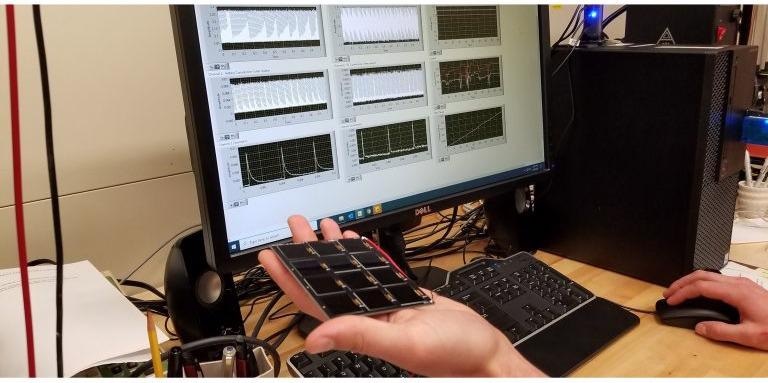Reviewed by Alex SmithAug 5 2021
Since there is always a need for a majority of batteries to be recharged, scientists are finding ways to make use of ambient lighting as a possible source for producing small amounts of power for indoor devices.
 Indoor photovoltaics for battery-powered sensors. Image Credit: Shore and Hamadani.
Indoor photovoltaics for battery-powered sensors. Image Credit: Shore and Hamadani.
In the AIP Publishing Horizons — Energy Storage and Conversion virtual conference, to be conducted from August 4th to 6th, Andrew Shore and Behrang Hamadani, from the National Institute of Standards and Technology, will present their study outcomes on the abilities of indoor solar cells to produce power under an LED. Titled “Indoor photovoltaics for battery-powered sensors,” their presentation will be open during the three-day conference.
The scientists made use of one lighting source, a white LED featuring an illuminance of 1,000 lux and a color coordinate temperature of 3,000 K, quite similar to normal brightness for indoor lights, to experiment with three distinct modules — a silicon (Si) semiconductor, a gallium arsenide (GaAs) semiconductor and a gallium indium phosphide (GaInP) semiconductor. The intensity of the light source was higher on the shorter wavelengths of light.
Under these light settings, the GaInP mini module performed with the highest power conversion efficiency, followed by the GaAs mini module, with the Si mini module as the lowest performer. The GaInP and GaAs modules have a better spectral match with this visible-spectrum LED light source.
Andrew Shore, National Institute of Standards and Technology
In general, there is an abundance of indoor ambient light from various sources, and thus a ceiling light in an office surrounding would be sufficient to charge any of the mini-modules that were investigated. This makes them all feasible as power sources for indoor sensors and batteries. According to Shore, the GaInP would need a minimal amount of light and yet retain high efficiency, but not all indoor light sources are LEDs.
Different light sources have different spectra. For instance, an incandescent light source has a large portion of its irradiance in the near-infrared region. Fluorescent lights have several spikes in intensity at different places in the visible spectrum.
Andrew Shore, National Institute of Standards and Technology
“LED lights generally have one short, prominent peak around 450 nanometers and another more gradual peak around 600 nm. Each of these light sources will affect the power conversion efficiency of the photovoltaic technology,” added Shore.
According to Shore, the next phase will be to test the mini-modules under real-world conditions, similar to a person turning a light on and off at frequent intervals. The researchers believe they can power more than one sensor by a module when testing is in progress.